Applications of Ferro-Nanofluid on a Micro-Transformer
Abstract
:1. Introduction
2. Experimental Section
2.1. Fabrication of Oil-based Fe3O4 Nanofluids
2.2. Fabrication of MEMS Transformer
3. Results and Discussion
- From the macroscopic point of view, a nanoparticle can be considered as a small magnetic dipole, which is shown in Figure 12. The direction of the magnetic dipoles was originally random. When an external magnetic field is applied, the direction of magnetic dipoles will turn to the direction of the external magnetic field and form a non-zero total magnetic dipole moment. Once the external magnetic field is removed, the direction of magnetic dipoles would return to random distribution with a zero total magnetic dipole moment due to Brownian motion in a short period of time. This recovering period of time is called “Brownian relaxation time” [28].
- From the microscopic point of view, a nanoparticle is composed of numerous magnetic dipole moments, as shown in Figure 13. These magnetic dipole moments were also influenced while an external magnetic field was applied or removed. The recovering time of these magnetic dipole moments is called “Neel relaxation time” [28].
4. Conclusions
Acknowledgments
References
- Xu, M; Liakopoulos, TM; Ahn, CH. A microfabricated transformer for high-frequency power or signal conversion. IEEE Trans. Magn 1998, 34, 1369–1371. [Google Scholar]
- Yoon, JB; Han, CH; Yoon, E; Kim, CK. Monolithic fabrication of electroplated solenoid inductors using three-dimensional photolithography of a thick photoresist. Jpn. J. Appl. Phy 1998, 37, 7081–7085. [Google Scholar]
- Yoon, JB; Han, CH; Yoon, E; Kim, CK. Monolithic integration of 3-D electroplated microstructures with unlimited number of levels using planarization with a sacrificial metallic mold (PSMM). IEEE MEMS Tech. Dig 1999, 1, 624–629. [Google Scholar]
- Laney, DC; Larson, LE; Chan, P; Malinowski, J; Harame, D; Subbanna, S; Volant, R; Case, M. Lateral microwave transformers and inductors implemented in a Si/SiGe HBT process. IEEE Int. Microwave Symp. Dig 1999, 3, 855–858. [Google Scholar]
- Ryu, HJ; Han, SH; Kim, HJ. Characteristics of twin spiral type thin film inductor with Fe-based nanocrystalline core. IEEE Trans. Magn 1999, 35, 3568–3570. [Google Scholar]
- Choi, YS; Yoon, JB; Kim, BI; Yoon, E; Han, CH. Fabrication of a solenoid-type microwave transformer. Transducer 2001, 1, 1564–1567. [Google Scholar]
- Kim, CS; Bae, S; Kim, HJ; Nam, SE; Kim, HJ. Fabrication of high frequency DC-DC converter using Ti/FeTaN film inductor. IEEE Trans. Magn 2001, 37, 2894–2896. [Google Scholar]
- Kim, KH; Kim, J; Kim, HJ; Han, SH; Kim, HJ. A megahertz switching DC/DC converter using FeBN thin film inductor. IEEE Trans. Magn 2002, 38, 3162–3164. [Google Scholar]
- Prieto, MJ; Pernia, AM; Lopera, JM; Martin, JA; Nuno, F. Design and analysis of thick-film integrated inductors for power converters. IEEE Trans. Ind. Appl 2002, 38, 543–552. [Google Scholar]
- Yoon, JB; Kim, BI; Choi, YS; Yoon, E. 3-D Lithography and Metal Surface Micromachining for RF and Microwave MEMS. Proceedings of IEEE International MEMS Conference, Las Vegas, NV, USA, 20–24 January 2002; pp. 673–676.
- Choi, YS; Yoon, JB; Kim, BI; Yoon, E. A High-performance MEMS Transformer for Silicon RF ICs. Proceedings of IEEE International MEMS Conference, Las Vegas, NV, USA, 20–24 January 2002; pp. 653–656.
- Park, EC; Choi, YS; Yoon, JB; Yoon, E. Monolithically integrable RF MEMS passives. J. Semicond. Tech. Sci 2002, 2, 49–55. [Google Scholar]
- Zhuang, Y; Rejaei, B; Boellaard, E; Vroubel, M; Burghartz, JN. Integrated solenoid inductors with patterned, sputter-deposited Cr/Fe10Co90/Cr ferromagnetic cores. IEEE Electron. Dev. Lett 2003, 24, 224–226. [Google Scholar]
- Park, JW; Allen, MG. Ultralow-profile micromachined power inductors with highly laminated Ni/Fe cores: Application to low-megahertz DC-DC converters. IEEE Trans. Magn 2003, 39, 3184–3186. [Google Scholar]
- Brandon, EJ; Wesseling, E; White, V; Ramsey, C; Castillo, LD; Lieneweg, U. Fabrication and characterization of microinductors for distributed power converters. IEEE Trans. Magn 2003, 39, 2049–2056. [Google Scholar]
- Yoon, JB; Kim, BI; Choi, YS; Yoon, E. 3-D construction of monolithic passive components for RF and microwave ICs using thick-metal surface micromachining technology. IEEE Trans. Microw. Theory Tech 2003, 51, 279–288. [Google Scholar]
- Wang, N; O’Donnell, T; Roy, S; Brunet, M; McCloskey, P; O’Mathuna, SC. High-frequency micro-machined power inductors. J Magn Magn Mater 2005, 290–291, 1347–1350. [Google Scholar]
- Chong, K; Xie, YH. High-performance on-chip transformers. IEEE Electron Dev. Lett 2005, 26, 557–559. [Google Scholar]
- Zhao, JH; Zhu, J; Chen, ZM; Liu, ZW. Radio-frequency planar integrated inductor with permalloy-SiO2 granular films. IEEE Trans. Magn 2005, 41, 2334–2338. [Google Scholar]
- Gao, XY; Cao, Y; Zhou, Y; Ding, W; Lei, C; Chen, JA. Fabrication of solenoid-type inductor with electroplated NiFe magnetic core. J. Magn. Magn. Mater 2006, 305, 207–211. [Google Scholar]
- Seemann, K; Leiste, H; Beckker, V. A new generation of CMOS-compatible high frequency micro-inductors with ferromagnetic cores: Theory, fabrication and characterization. J. Magn. Magn. Mater 2006, 302, 321–326. [Google Scholar]
- Yamaguchi, M; Kim, KH; Ikedaa, S. Soft magnetic materials application in the RF range. J. Magn. Magn. Mater 2006, 304, 208–213. [Google Scholar]
- Lei, C; Zhou, Y; Gao, XY; Ding, W; Cao, Y; Choi, H; Won, JH. Fabrication of a solenoid-type inductor with Fe-based soft magnetic core. J. Magn. Magn. Mater 2007, 308, 284–288. [Google Scholar]
- Dai, CL; Chen, YL. Modeling and manufacturing of micromechanical RF switch with inductors. Sensors 2007, 7, 2660–2670. [Google Scholar]
- Lee, DS. Energy harvesting chip and the chip based power supply development for a wireless sensor network. Sensors 2008, 8, 7690–7714. [Google Scholar]
- Yunas, J; Hamzah, AA; Majlis, BY. Fabrication and characterization of surface micromachined stacked transformer on glass substrate. Microelectron. Eng 2009, 86, 2020–2025. [Google Scholar]
- Yunas, J; Hamzah, AA; Majlis, BY. Surface micromachined on-chip transformer fabricated on glass substrate. Microsyst. Technol 2009, 15, 547–552. [Google Scholar]
- Kotitz, R; Weitschies, W; Trahms, L; Semmler, W. Investigation of Brownian and Neel relaxation in magnetic fluids. J. Magn. Magn. Mater 1999, 201, 102–104. [Google Scholar]
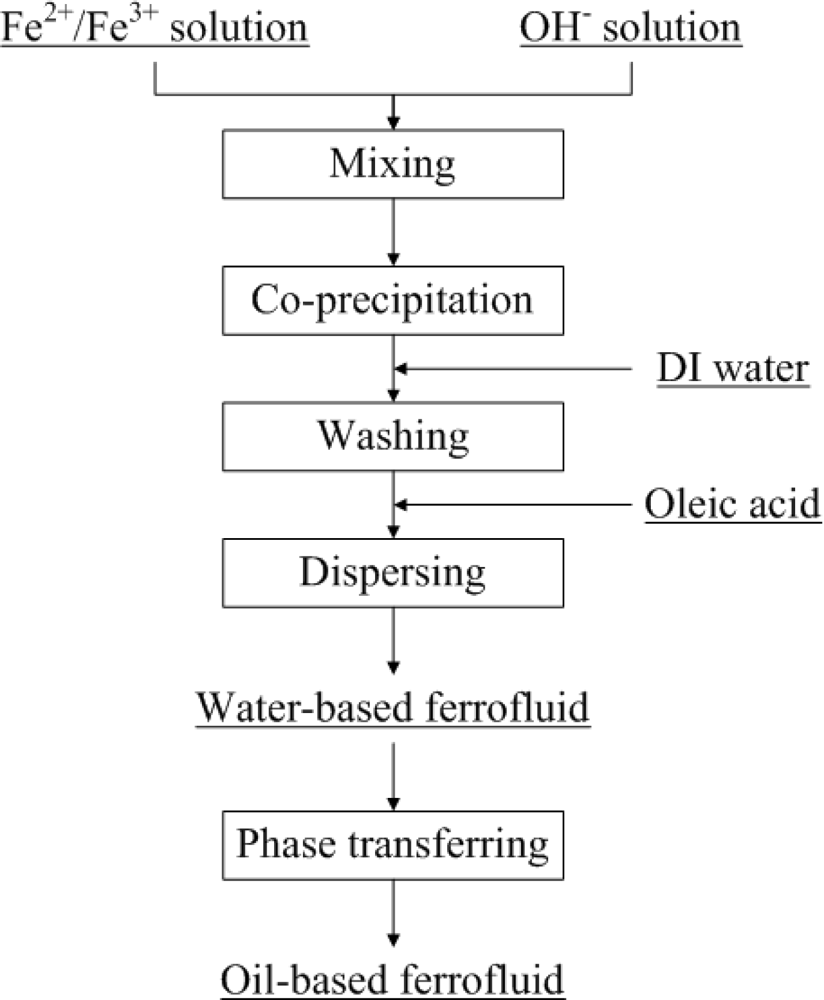
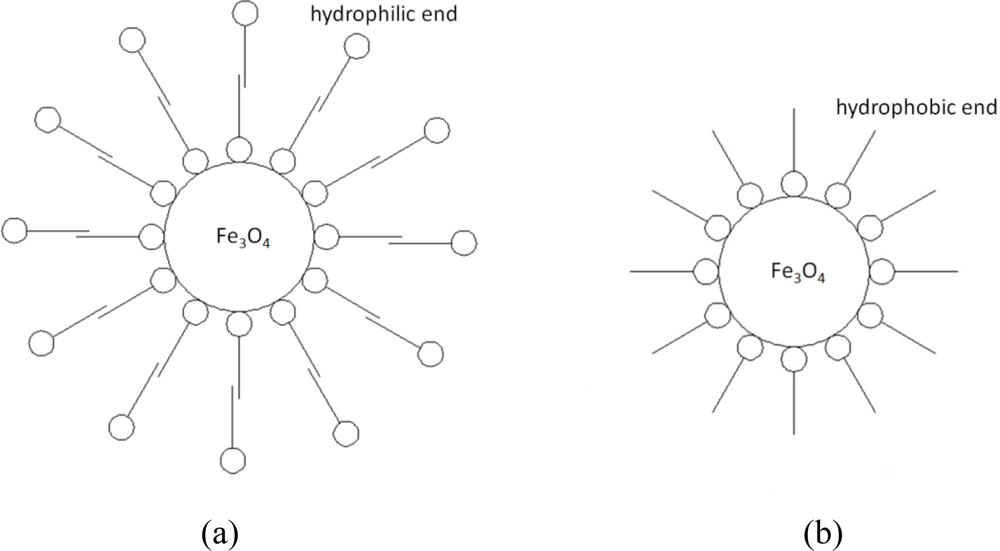
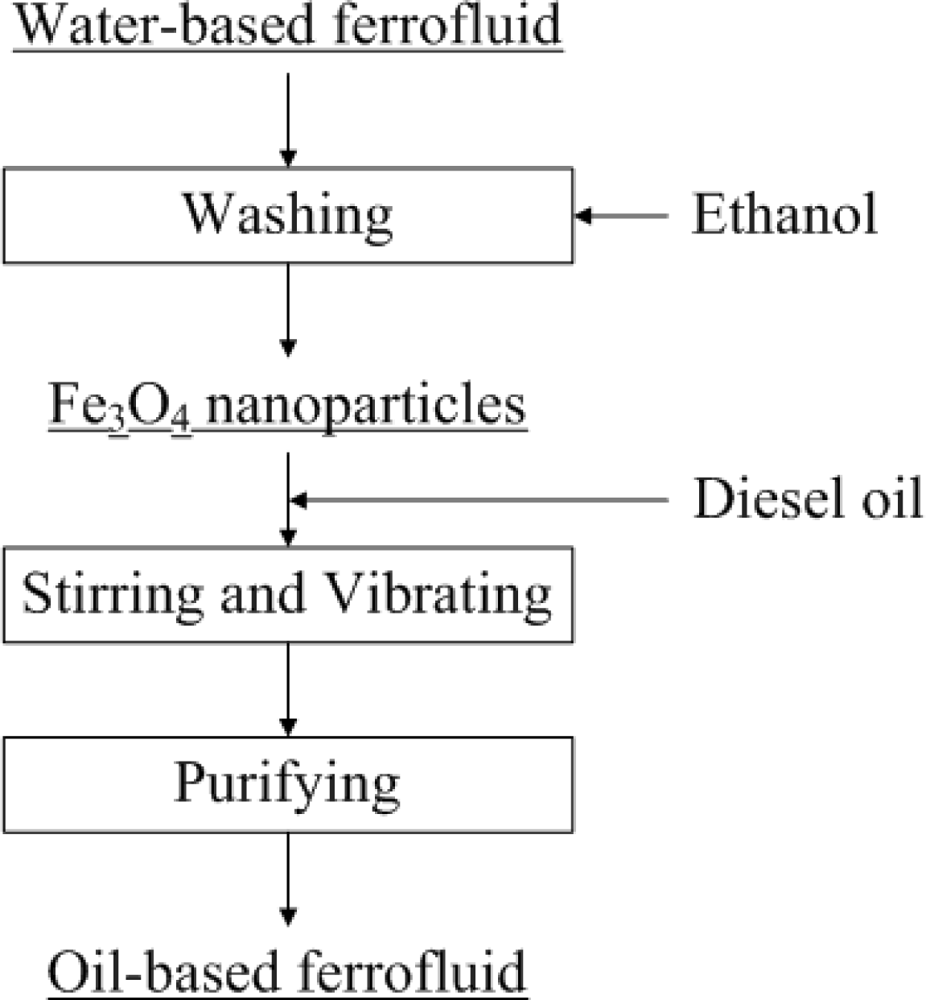
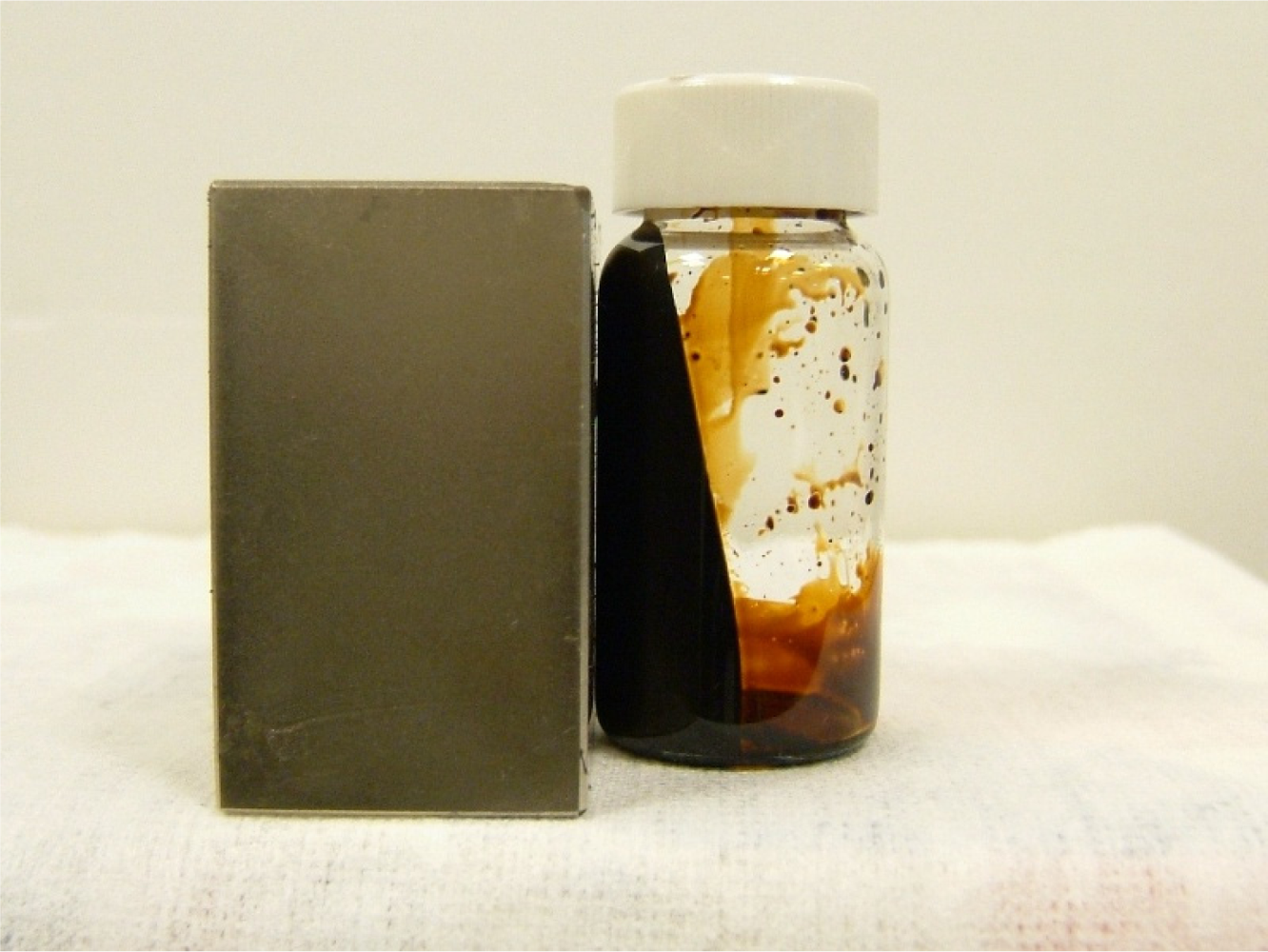
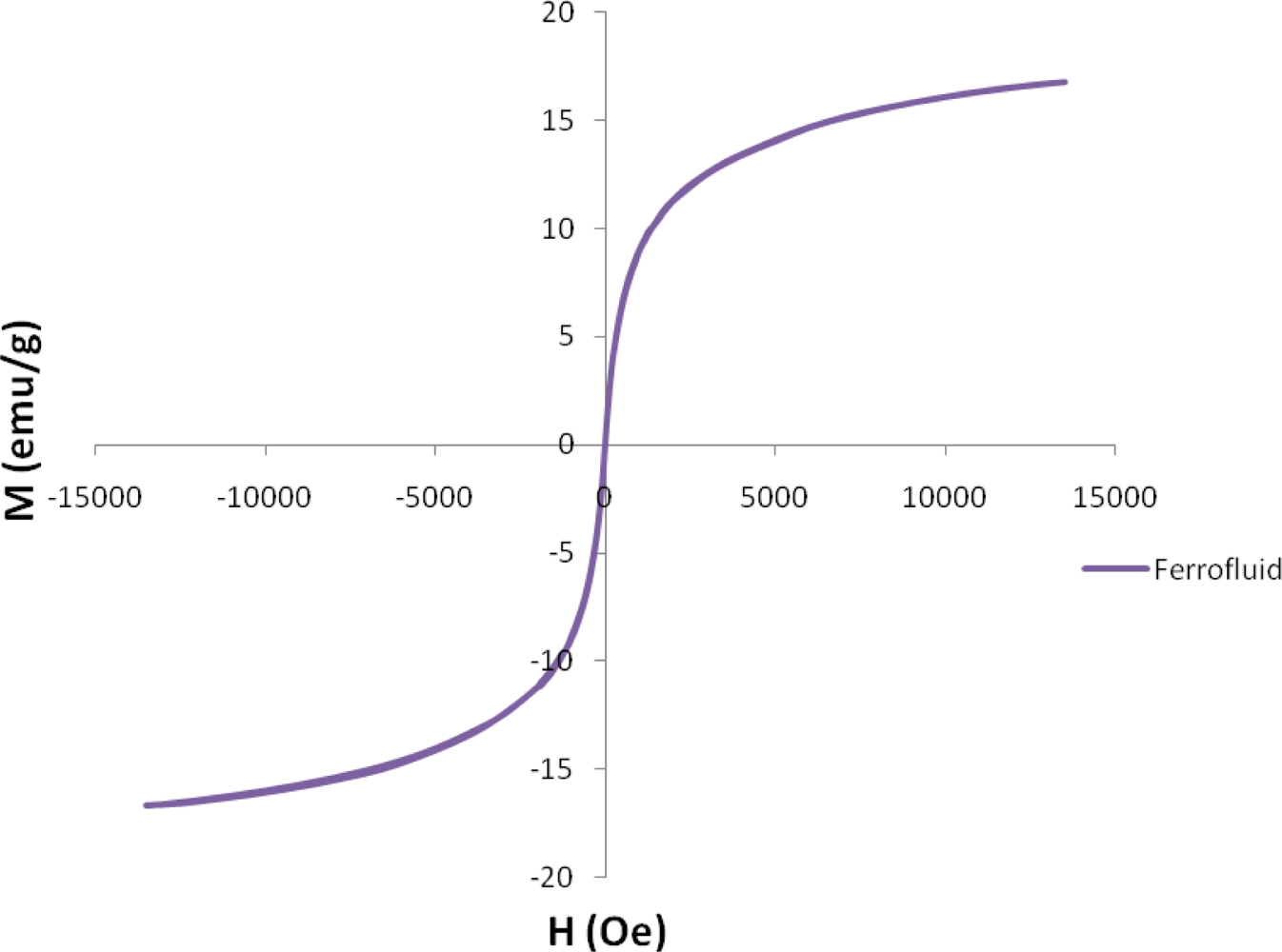
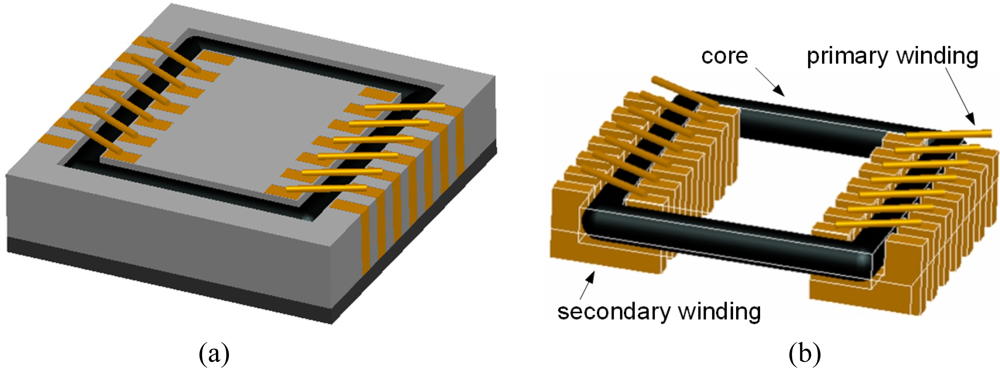
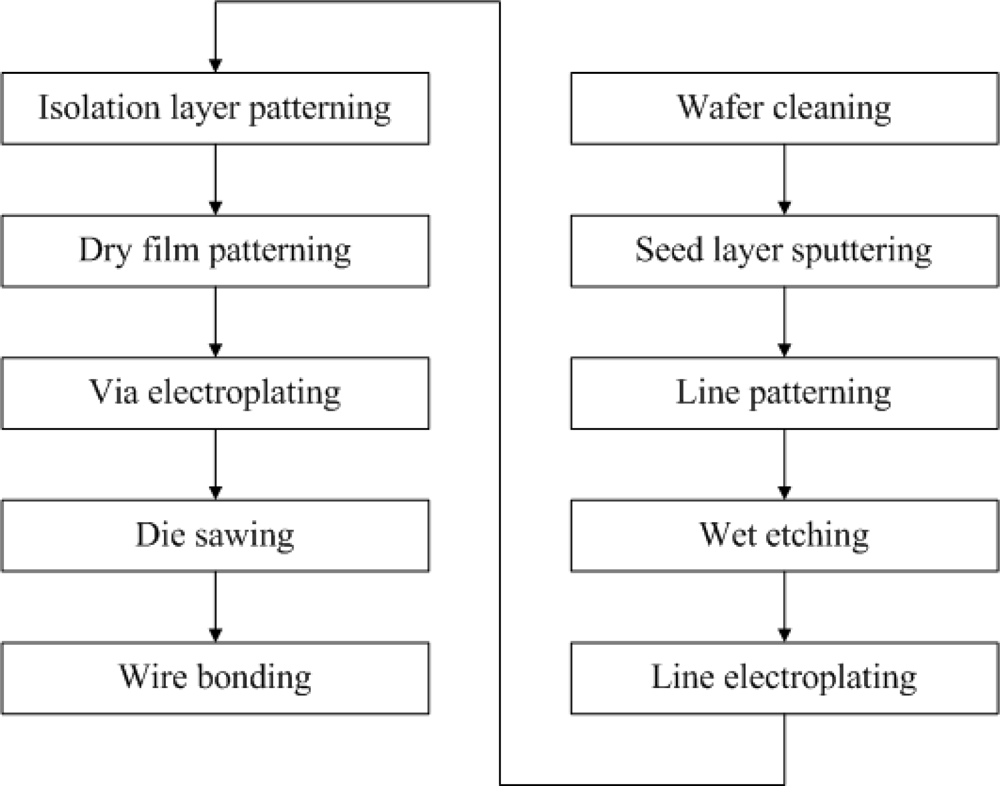
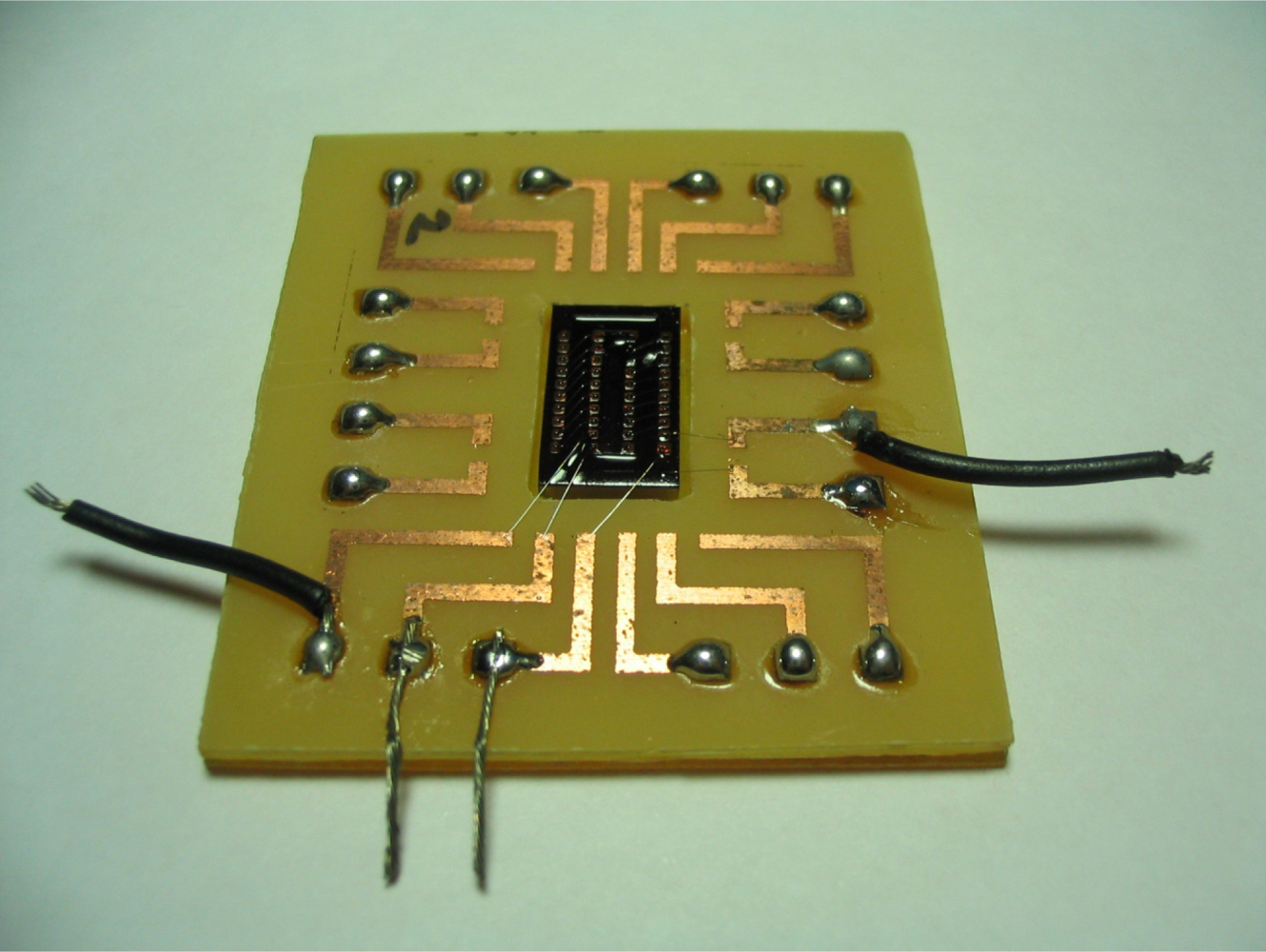
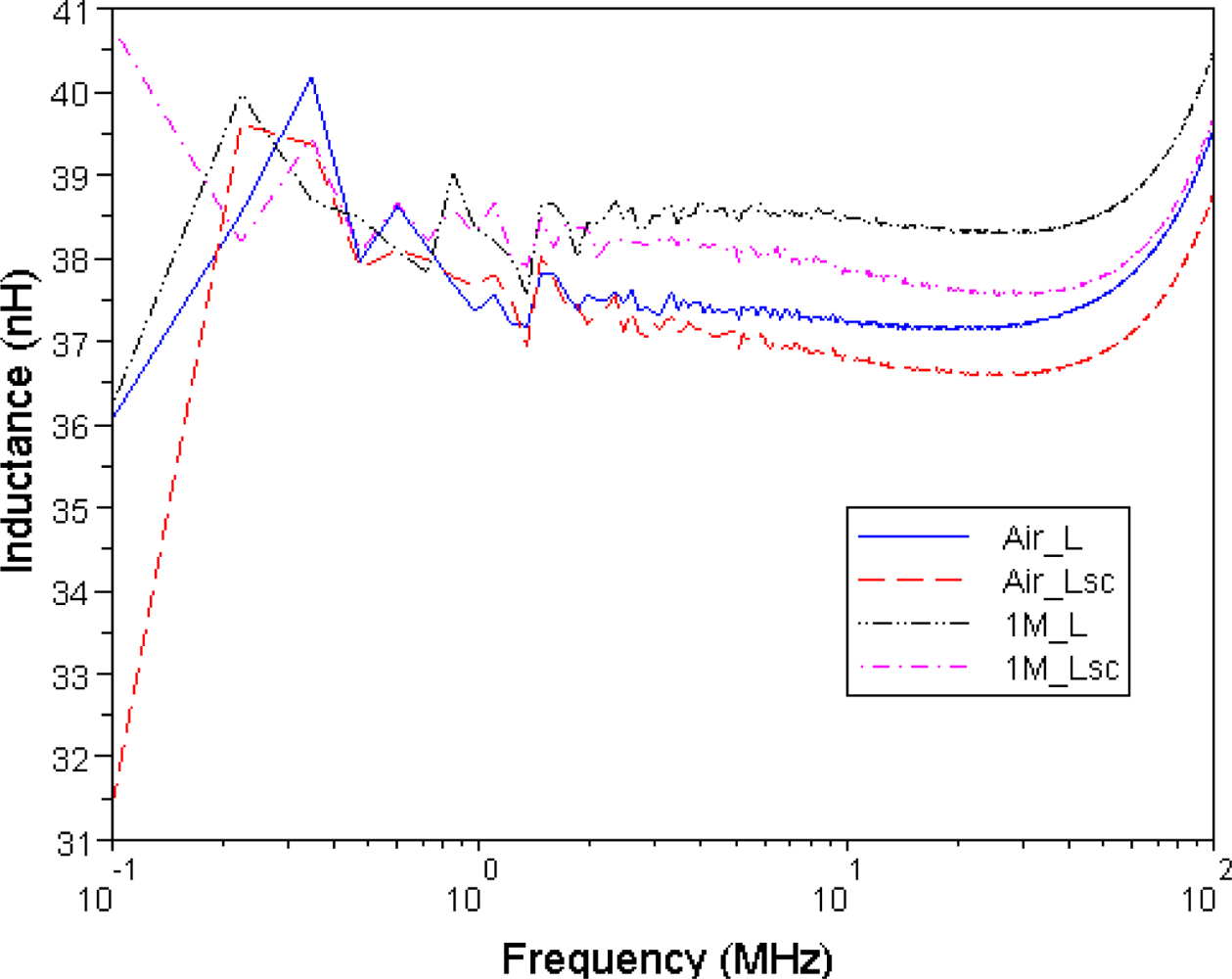
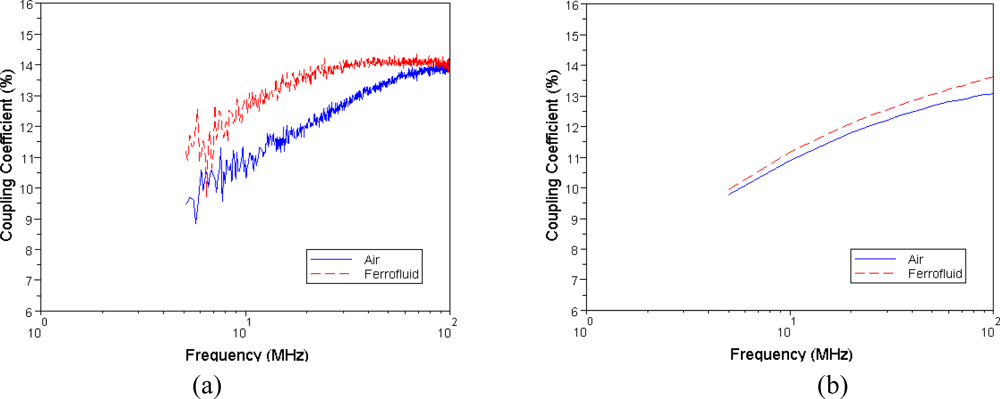
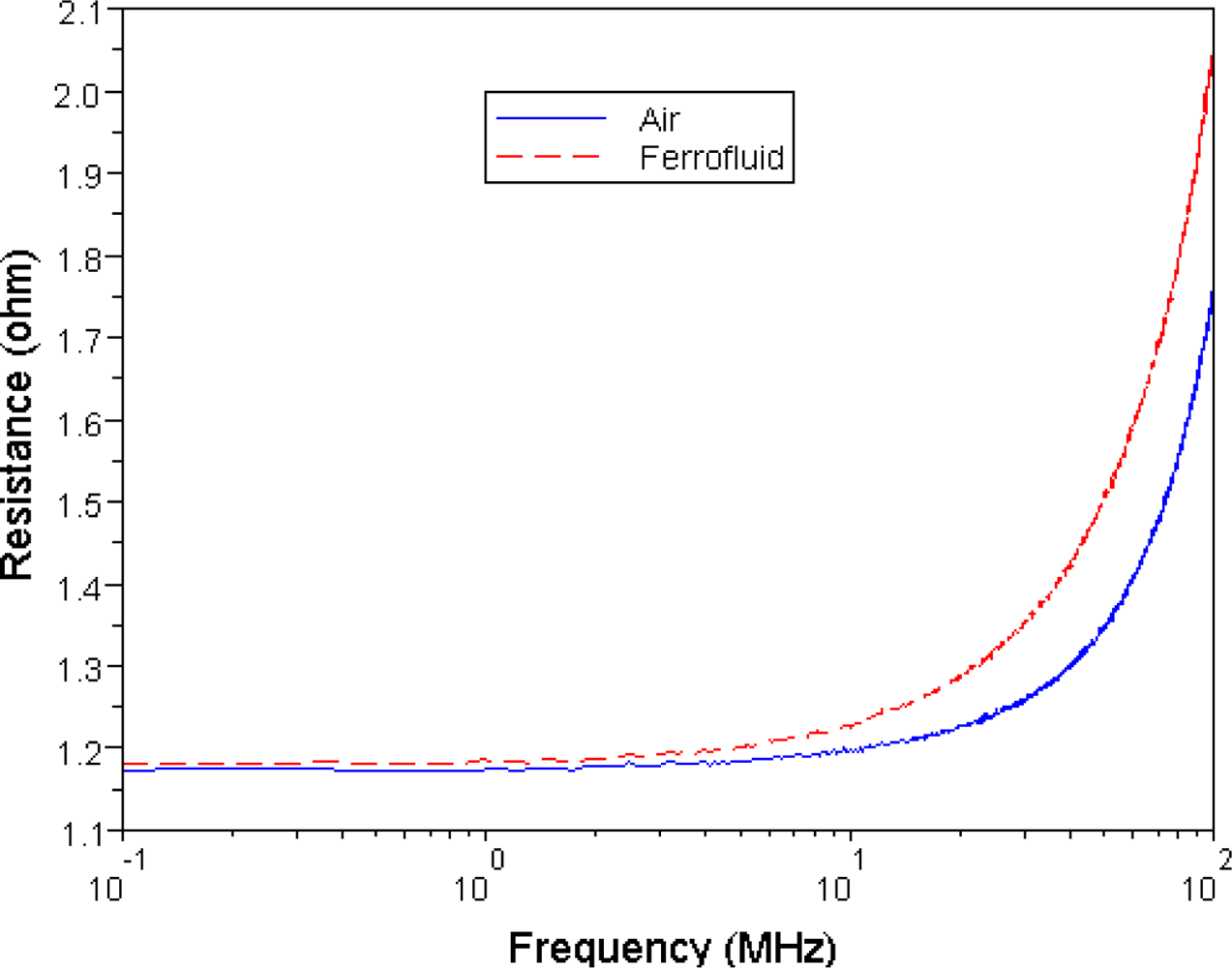
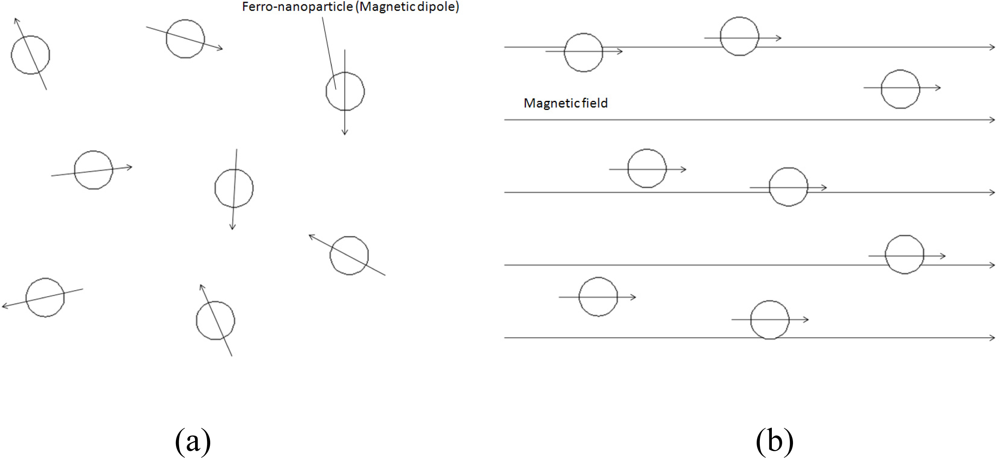
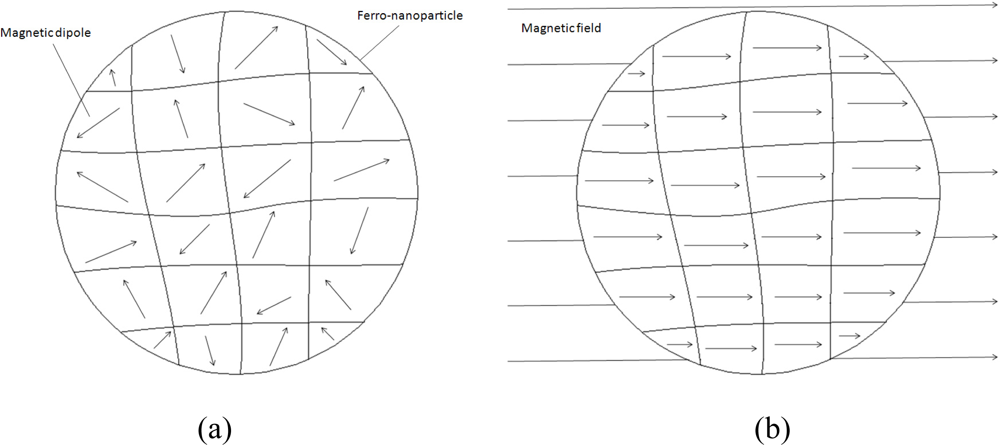
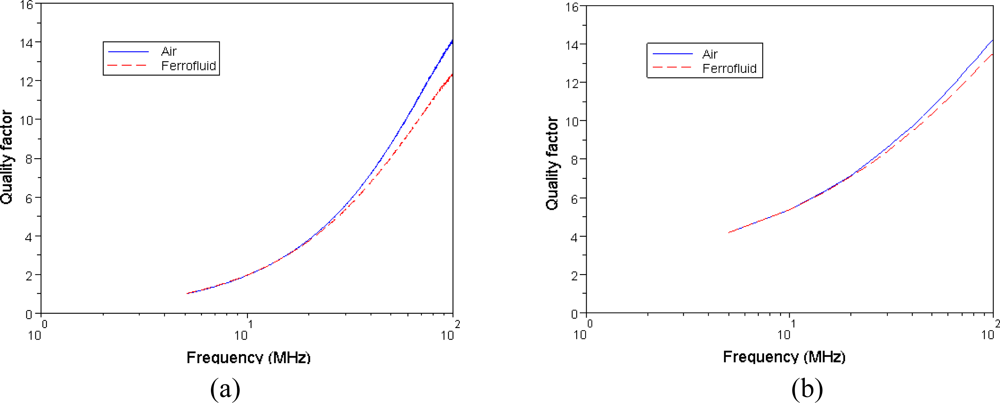
© 2010 by the authors; licensee MDPI, Basel, Switzerland. This article is an open access article distributed under the terms and conditions of the Creative Commons Attribution license (http://creativecommons.org/licenses/by/3.0/).
Share and Cite
Tsai, T.-H.; Kuo, L.-S.; Chen, P.-H.; Lee, D.-s.; Yang, C.-T. Applications of Ferro-Nanofluid on a Micro-Transformer. Sensors 2010, 10, 8161-8172. https://doi.org/10.3390/s100908161
Tsai T-H, Kuo L-S, Chen P-H, Lee D-s, Yang C-T. Applications of Ferro-Nanofluid on a Micro-Transformer. Sensors. 2010; 10(9):8161-8172. https://doi.org/10.3390/s100908161
Chicago/Turabian StyleTsai, Tsung-Han, Long-Sheng Kuo, Ping-Hei Chen, Da-sheng Lee, and Chin-Ting Yang. 2010. "Applications of Ferro-Nanofluid on a Micro-Transformer" Sensors 10, no. 9: 8161-8172. https://doi.org/10.3390/s100908161





